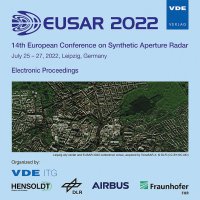LuTan-1: An Innovative L-band Spaceborne SAR Mission
Konferenz: EUSAR 2022 - 14th European Conference on Synthetic Aperture Radar
25.07.2022 - 27.07.2022 in Leipzig, Germany
Tagungsband: EUSAR 2022
Seiten: 5Sprache: EnglischTyp: PDF
Autoren:
Liu, Kaiyu; Wang, Robert; Zhang, Heng; Liu, Dacheng; Ou, Naiming; Chen, Yafeng; Yue, Haixia; Yu, Weidong; Deng, Yunkai; Jiao, Yuanbo; Wang, Jili (Aerospace Information Research Institute, Chinese Academy of Sciences, Beijing, China)
Liang, Da (College of Marine Technology, Ocean University of China, Qingdao, China)
Yu, Wei (Nanjing Research Institute of Electronics Technology, Nanjing, China)
Inhalt:
The LuTan-1 (referred as LT-1) mission is the first bistatic spaceborne SAR mission for civil applications in China, which contains two full-polarimetric L-band SAR satellites operating with flexible flight configurations. The life time of the individual satellites is specified as 8 years, and the two data acquisition stages are planned. In phase I, two satellites fly in a formation with a variable baseline, and the bistatic InSAR stripmap mode is utilized to acquire the global digital elevation and terrain models with high accuracy and spatial resolution. In phase II, two satellites shall share the common reference orbit with a 180-degree orbital phasing difference. The repeat cycle will be decreased to 4 days and topographic variations with millimetre accuracy at large scale can be measured using the differential InSAR technique. Many methodologies and technologies of high degree of innovation are proposed and employed. Both satellites have been successfully launched in Jan.26, and Feb. 28, 2022, respectively. In the following lifetime, LuTan-1 will continually provide observation data of high-quality which could provide new possibilities, advances and relevant information for the land dynamics monitoring.


